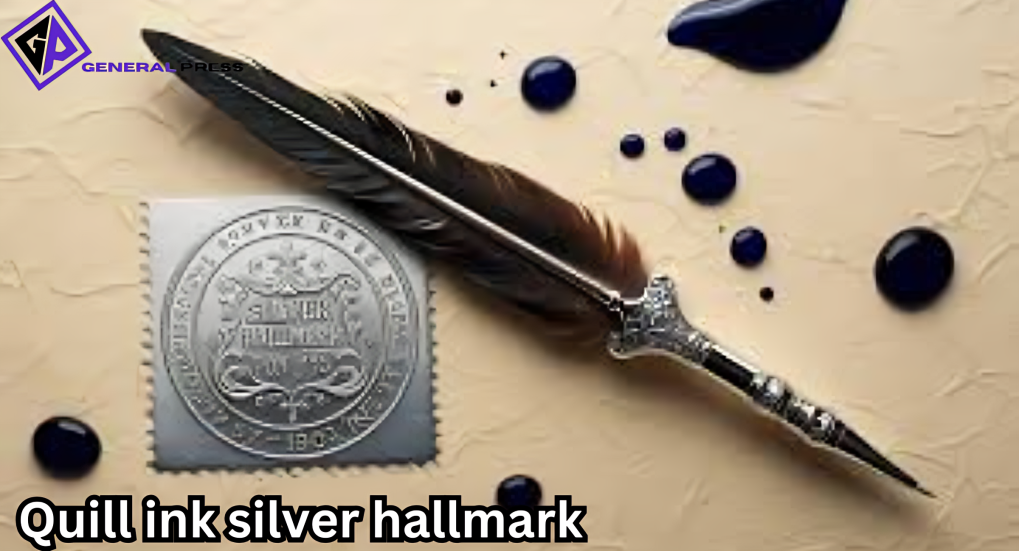The allure of handwritten scripts, etched in flowing quill ink, is a nostalgic nod to the past. Pairing this with silver hallmarks creates two timeless symbols of refinement that captivate enthusiasts and collectors alike. This article delves into the history and significance of these two elements, exploring their intertwined role in culture, craftsmanship, and commerce.
The Art of Quill Ink
Long before the advent of ballpoint pens and digital keyboards, quill pens were the instrument of choice for writing. Crafted from large birds’ flight feathers, like geese and swans, quill pens offered unmatched precision, elegance, and craftsmanship. The ink used was specially formulated to flow smoothly, adhering perfectly to parchment or vellum for precise writing.
Quill ink has a rich history, often derived from organic materials like oak galls, iron salts, and gum arabic. These ingredients combined to create a deep, enduring ink that stood the test of time. Medieval manuscripts, treaties, and early literary works were written with quill ink, showcasing the medium’s remarkable durability through time.
In the modern era, quill ink has become a symbol of artistry and nostalgia. Calligraphers and artists embrace it for its ability to produce varied line weights and intricate details. Dipping and writing with a quill fosters a deliberate, meditative pace, connecting the writer to expression in its purest form.
The Significance of Silver Hallmarks
Also Read: Bothell Contract CNC Router Shop: Precision and Expertise at Your
Silver hallmarks, on the other hand, have a practical yet equally historic significance. A hallmark is a series of marks stamped into precious metals to certify their purity and authenticity. These marks have been used for centuries as a guarantee of quality, protecting both the buyer and the craftsman.
The origins of silver hallmarks date back to the medieval period, with some of the earliest systems established in Europe. In England, for instance, the hallmarking system began in the 14th century with the Goldsmiths’ Company. Over time, marks evolved to include maker’s initials, silver purity, assay office, and a date letter indicating production year.
Collectors and historians value silver hallmarks not only for their assurance of quality but also for the insight they provide into the history of an object. A single piece of silverware or jewelry can tell a story of its origin, its maker, and its journey through time.
The Intersection of Quill Ink and Silver Hallmarks
While seemingly distinct, quill ink and silver hallmarks share a connection through their cultural and historical roles. Both showcase meticulous craftsmanship and attention to detail, serving as a testament to the skill and artistry of their creators.
In centuries past, quill ink was often used to document the certification of silver pieces. Documents detailing the provenance, transactions, or ownership of silver items captured the same precision that defined the creation of the objects. The flowing script of quill ink harmonized with the intricate markings on silver, creating a unified expression of artistry and authenticity.
Moreover, both quill ink and silver hallmarks evoke a sense of timelessness. In an age where speed and convenience dominate, these traditional practices remind us of the beauty of deliberate craftsmanship. They encourage us to pause, appreciate the artistry, and reflect on the narratives embedded in objects and writings.
Collecting and Preserving the Legacy
For collectors, both quill ink artifacts and silver items with hallmarks hold immense value. Original manuscripts written in quill ink offer a tangible connection to history, providing insights into the thoughts and lives of their creators. Similarly, collectors seek silver pieces with clear, well-preserved hallmarks not only for their material value but also for the stories they tell.
Preservation is key to maintaining the legacy of these treasures.Quill ink manuscripts require storage in controlled environments to prevent fading or degradation. Similarly, silver items require proper care to avoid tarnishing and damage. Cleaning methods should be gentle, and professional restoration may be needed for particularly valuable or delicate items.
Modern Resurgence
In recent years, there has been a resurgence of interest in both quill ink and silver hallmarks. Calligraphy enthusiasts and history buffs have revived the use of quill pens, appreciating the tactile and aesthetic experience they provide. Workshops and online tutorials teach the art of quill writing, attracting a new generation to this timeless craft.
Similarly, silver hallmarks continue to intrigue collectors and consumers. Antique fairs, auctions, and online marketplaces offer a wealth of opportunities to explore and acquire hallmark-stamped silver items. Understanding the significance of these marks enhances the joy of collecting and deepens the appreciation for the artistry involved.
FAQs:
1. What is the significance of quill ink in writing history?
Quill ink is a symbol of historical elegance and craftsmanship. Used for centuries, quill pens, often crafted from goose or swan feathers, and ink made from natural materials were central to the writing process before modern pens and printers became prevalent. The quill ink era represents the art of handwriting, where every stroke was deliberate and meaningful, making it a lasting symbol of refinement.
2. What are silver hallmarks?
Silver hallmarks are stamps or marks that indicate the quality and authenticity of silver items. These marks were traditionally applied by official assay offices and signify the purity of the silver used, the maker or artisan responsible, and the country or region of origin. They offer a way for collectors to authenticate and appreciate silver pieces, from jewelry to cutlery, as well as their historical context.
3. Why are silver hallmarks important in collecting?
Silver hallmarks provide essential information about the age, origin, and quality of silver pieces. For collectors and historians, they act as proof of authenticity and help trace the lineage of silver items, ensuring their historical accuracy. Hallmarks also play a crucial role in determining the value of silver antiques, as they reflect the craftsmanship and cultural significance of the era in which they were made.
4. What makes quill ink and silver hallmarks timeless?
Both quill ink and silver hallmarks embody a sense of craftsmanship, history, and tradition. Quill ink represents the art of communication in its most personal and original form, while silver hallmarks speak to an era of meticulous handwork and attention to detail. Together, they evoke a sense of nostalgia and reverence for the past, offering a lasting connection to bygone times of elegance and refinement.
Conclusion
Quill ink and silver hallmarks represent more than just tools or markings; they are symbols of a bygone era where craftsmanship and authenticity were paramount. Whether through the graceful lines of a handwritten letter or the intricate stamps on a piece of silver, these elements connect us to history and remind us of the enduring beauty of human creativity. Embracing and preserving these traditions ensures that their legacy will continue to inspire future generations.




